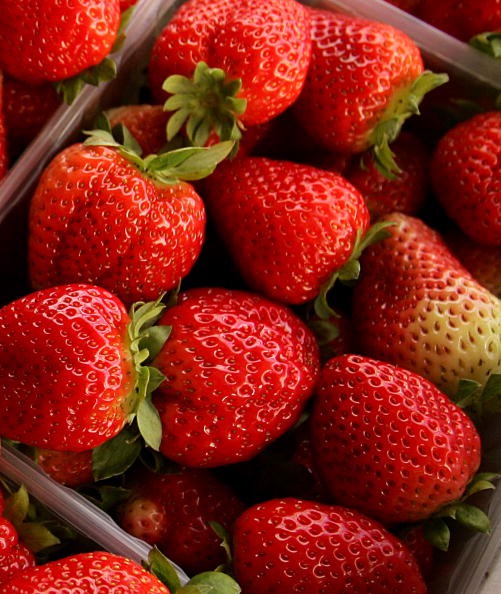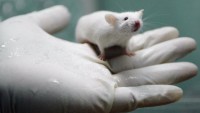Foodborne Pathogens Could Be Destroyed By UV Light, Finds Research
| Saranya Palanisamy | | Jul 23, 2015 06:22 PM EDT |
(Photo : Photo by Abid Katib/Getty Images) Ultraviolet C light is capable of destroying foodborne pathogens on certain fruits, say researchers from the Washington State University in a study published in the International Journal of Food Microbiology.
Ultraviolet C light is capable of destroying foodborne pathogens on certain fruits, say researchers from the Washington State University in a study published in the International Journal of Food Microbiology.
Though ultraviolet C (UVC) light cannot penetrate opaque and solid objects, they are capable of killing microorganism by destroying their nucleic acids and disrupting their DNA. This light has been used for years to treat drinking water as well as to sanitize surfaces that might come in contact with food, reported Food Safety News.
Like Us on Facebook
Shyam Sablani, an associate professor in the WSU Department of Biological Systems Engineering and his team tested the effect of UVC on E. coli O157:H7 and Listeria monocytogenes present on the surface of various fruits including pears, raspberries, strawberries, apples and cantaloupe.
Foodborne pathogens like E. coli O157:H7 and Listeria monocytogenes when ingested cause symptoms like diarrhoea, stomach cramps, fever, nausea and vomiting. E. coli O157:H7 cause complications like renal failure, dehydration and anemia in children and elderly people.
It was observed that various factors like type of pathogen, dosage of light, length of exposure as well as nature of fruit surface had important roles to play in the treatment outcomes. For instance strawberries required lesser dose of light than raspberries and pears required higher dose of light than apples for the surface pathogens to be reduced.
The researchers observed that UVC was more effective in reducing pathogens present on smooth surfaced fruits like apples and pears up to 99.99 percent and nearly 90 percent if the contamination on the rough surfaced fruits like cantaloupe and raspberries are low. It was also observed that UVC was effective in inactivating or destroying E.coli than Listeria. The researchers are reported to be working on improving the effectiveness of UVC in reducing the surface pathogens of rough surfaced fruits.
The investigators noted that organic industries would be interested in this concept of sanitising because UVC is much better than chemical sanitizers likewise this technique would be of great help in package line for sanitising fruits.
This research was partially funded by a grant from the Biological and Organic Agriculture (BIOAg) program of the WSU Center for Sustaining Agriculture and Natural Resources.
TagsUV Light, Fruit sanitizing, Foodborne pathogens, E. coli O157:H7, Listeria monocytogenes
©2015 Chinatopix All rights reserved. Do not reproduce without permission
EDITOR'S PICKS
-

Did the Trump administration just announce plans for a trade war with ‘hostile’ China and Russia?
-

US Senate passes Taiwan travel bill slammed by China
-

As Yan Sihong’s family grieves, here are other Chinese students who went missing abroad. Some have never been found
-

Beijing blasts Western critics who ‘smear China’ with the term sharp power
-

China Envoy Seeks to Defuse Tensions With U.S. as a Trade War Brews
-

Singapore's Deputy PM Provides Bitcoin Vote of Confidence Amid China's Blanket Bans
-

China warns investors over risks in overseas virtual currency trading
-

Chinese government most trustworthy: survey
-

Kashima Antlers On Course For Back-To-Back Titles
MOST POPULAR
LATEST NEWS
Zhou Yongkang: China's Former Security Chief Sentenced to Life in Prison

China's former Chief of the Ministry of Public Security, Zhou Yongkang, has been given a life sentence after he was found guilty of abusing his office, bribery and deliberately ... Full Article
TRENDING STORY

China Pork Prices Expected to Stabilize As The Supplies Recover

Elephone P9000 Smartphone is now on Sale on Amazon India

There's a Big Chance Cliffhangers Won't Still Be Resolved When Grey's Anatomy Season 13 Returns

Supreme Court Ruled on Samsung vs Apple Dispute for Patent Infringement

Microsoft Surface Pro 5 Rumors and Release Date: What is the Latest?













